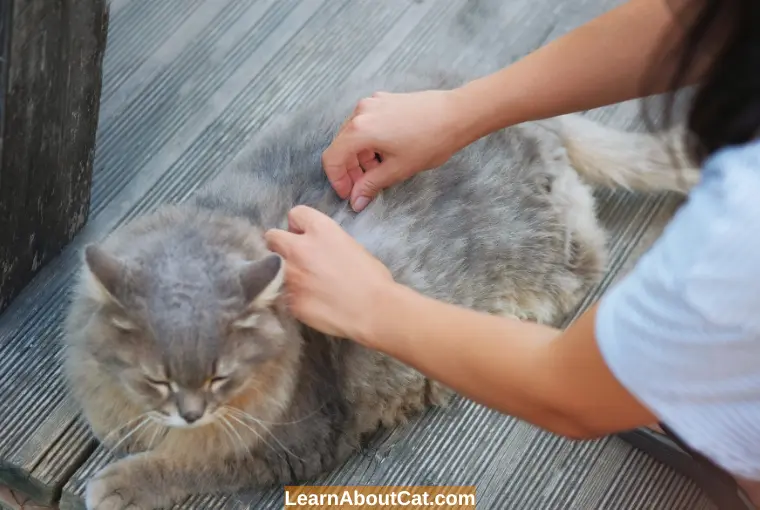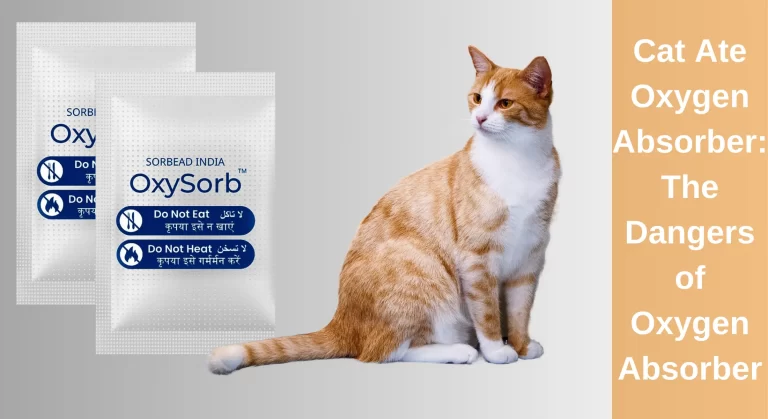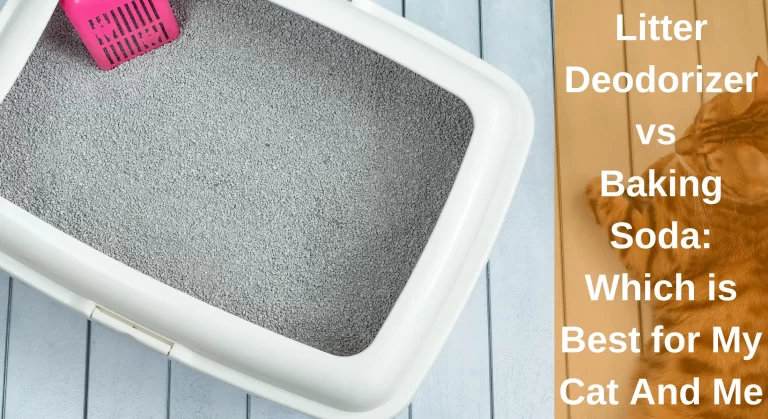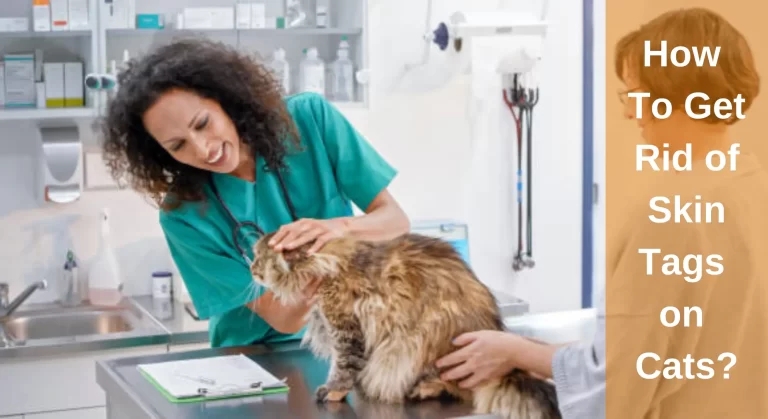Why My Cat Has Scabs on Its Neck But No Fleas? Reasons [Explained]
Seeing injuries in your cat’s perfect, fluffy coat is heartbreaking. You first think of fleas, but surprisingly, you don’t find any. Cat has scabs on its neck but no fleas can be very confusing, especially if they have been indoors and regularly groomed. What else can cause scabs on your pet’s neck?
There are a few causes for scabs, the most common being fleas. That being said, if your furry friend does not have a flea infestation, it could be allergies (flea allergy, food allergy), auto-immune skin diseases, parasites and nutritional deficiencies. All of these cause miliary dermatitis.
This article will explain military dermatitis in detail, why scabs form, when vets are needed, and what treatment options there are to prevent scabs from appearing again .

What is Miliary Dermatitis in Cats? Why Does My Cat Have Miliary Dermatitis?
Miliary dermatitis is an umbrella term that covers all the conditions that can cause your cat to develop scabs. It is also known as feline acne, feline eczema or scratchy cat disease. There are several reasons behind miliary dermatitis, the most common being fleas. You will notice your cat excessively grooming one part of its body before the scabs appear. The base of the neck and the bottom of the tail is the most common part for them to form. The following are the reasons for scab formation on your feline:
Why Does My Cat Have Scabs On Her Neck But No Fleas?
You may notice your cat excessively self-grooming before the skin develops scabs. Initially, the cat may only groom a specific area obsessively. Itching and rash can lead to hair loss if scratched persistently on sites with a rash. Cats’ necks and tail bases are their bodies’ most commonly affected parts. There are many causes of miliary dermatitis in cats, both internal and external, but the symptoms and manifestations tend to be similar. Among the most common causes of itchy skin in cats are:
- Parasitic Infections
- Environmental Allergies
- Food Allergies
- Nutritional Deficiencies
- Autoimmune Skin Diseases

1. Parasitic Infections
The most common cause of scabbing and miliary dermatitis is parasitic infections caused by fleas, ticks, and mites. Particularly at the base of the neck area, as that is where they like to make themselves feel at home.
Other signs of Parasitic infestation are:
- A dull coat
- Intense Itching and scratching
- Inflammation and redness on the skin
- Other skin lesions
Schedule a visit with your veterinarian if you believe your pet may have a flea infection. Your vet will confirm the diagnosis and prescribe a topical treatment plan to get rid of the fleas. Remember, just because you cannot find any fleas yourself does not rule out flea infestation. Sometimes, cats groom themselves to the point that finding visible fleas is impossible.
2. Environmental Allergies
Something in your feline’s environment can cause your pet’s skin to flare up. This redness and itchiness make your cat scratch itself obsessively, leading to scab formation. Your cat could be allergic to anything, from its bedding to its litter to another cat’s excrement and even pollen or dust. It is challenging to find exactly what is causing your pet’s skin to flare up, but after removing the allergen, your furry friend’s itchiness should subside.
Find Out: Should I Quarantine My Cat With Tapeworms
3. Food Allergies
Some cats suffer from hypersensitivity to the ingredients in their food, particularly proteins like chicken, beef and fish. This will lead to dermatitis as well as gastrointestinal symptoms like vomiting, diarrhoea and constipation.
To diagnose food allergies, vets recommend the elimination method. They will change your feline’s diet in order to see if its symptoms subside. If your cat gets better on a new diet and gets worse again after you revert to its old diet, the cause has been pinpointed, and allergy-causing foods need to be avoided altogether.
4. Nutritional Deficiencies
Your cat’s health will shine through its fur. If you notice shedding and scabbing, it may be due to a poor diet. Sometimes, cat owners give only homemade cat food or feed their pets poor-quality kibble without realizing that their nutritional needs are not being met.
Without an adequate amount of vitamins and protein, your furry friend is unable to maintain a flawless coat. Its fur will start falling out, and it will develop scabs on its skin. As skin becomes less healthy, it becomes dry and itchy, so your pet will scratch itself, worsening the lesions.
Talk to your vet about your kitty’s dietary needs and which food is best for your feline.
5. Autoimmune Skin Diseases
If your cat has an auto-immune disease, it means that its immune system is attacking its own body. Unfortunately, this is incurable but very manageable. Your cat will develop ulcers and blisters on different parts of its body.
You will have to take your cat to the vet if you suspect this. The vet will take a biopsy of the lesion and draw some blood to make a definitive diagnosis, then guide you on managing the condition.
Interesting Reading: My Cat Has Worms How Do I Clean My House?
How Do I Get Rid of the Scabs on My Cat? Cat Scab Remedies and Treatments
There are a few ways you can help your beloved feline. First, resist the urge to pick at the scabs. They will turn into open wounds that are prone to infection. Instead, figure out and treat the underlying cause, as that will encourage your cat’s skin to heal. I will write some things you can do to relieve your furry friend’s condition:

1. Topical Flea Medication
If your cat has been diagnosed with a flea infestation, use the cream prescribed by your vet on your feline’s coat to get rid of them.
Also Read: Should You Pick Scabs Off Cats?
2. Steroid Creams
You can ask your vet for a feline-friendly steroid cream. These medications reduce inflammation and itchiness and can temporarily relieve your furry friend.
3. Bandaging
If you apply the cream and your cat is still scratching, you may need to consider covering the area with a bandage. This will allow optimum cream absorption and prevent your feline from ingesting the medicine.
4. Elizabethan Cone
You might need to consider putting a cone on your cat’s head. As much as they hate it, a cone will separate the affected areas from its teeth and claws, allowing the area to heal.
5. Remove Allergens
If your cat does not have fleas, chances are they are allergic to something. If you recently changed its food, consider changing it back. Keep your pet’s environment clean of dust, and keep it indoors in case it is a pollen allergy. To check whether it helps, you might also consider getting an air purifier.
Should You Pick Scabs Off Your Cat?
No, you should not pick scabs off your cat. Taking off scabs inhibits healing because they are a natural part of a wound’s healing process. As a result, the underlying skin will take longer to heal.

The scabs on your cat can, however, be helped by a few things.
- To keep the surrounding tissues hydrated while your cat heals, apply vet-recommended skin ointment to its skin.
- If you are interested in supplementing fatty acids into your cat’s food, you should speak with your vet first.
Frequently Asked Questions
Will my cat’s scabs and itchiness go away?
Skin scabs are not permanent lesions. With the right care and remedies mentioned above, your cat’s skin will definitely heal.
What do skin mites look like on cats?
The spots look like small orange ovals and may appear on your cat’s head, paws, or belly. The fleas attach to the cat’s skin and feed on its blood before dropping off.
What are the signs of scabies in cats?
A crusty ear edge and itching are the most common symptoms. Other symptoms are:
1. Acute itching
2. Skin flaking
3. Inflammation
4. Hair loss
How to Prevent Scabies in Cats?
The best way to prevent scabies in your cats is to keep them indoors and use an effective flea control that prevents mites and fleas as well.
How long does cat dermatitis last?
Once fleas are controlled, cats will begin to recover. The itching may take up to two weeks to disappear completely.
Final Words!
If you notice scabs on the base of your cat’s neck, do not pick on them. Take your cat to the vet and get a definitive diagnosis and treatment. In most cases, if your pet does not have fleas, it is allergic to something in its environment or food. You will need to eliminate the allergen to calm your feline’s hypersensitivity reaction. In very rare cases, your cat’s scabs may be due to an auto-immune disease, for which management is vital.
You need to follow your vet’s advice and make sure your pet does not scratch any of its scabs by applying prescribed ointments, bandaging and putting your cat in a cone. All of these aid in good healing and stop new scabs from emerging.
Related Posts:
Who is Isabella?
My name is Isabella, and I am a dedicated and knowledgeable cat enthusiast. With years of experience caring for cats and a deep love for felines, I made a mission to help other cat lovers navigate the challenges of cat ownership.






